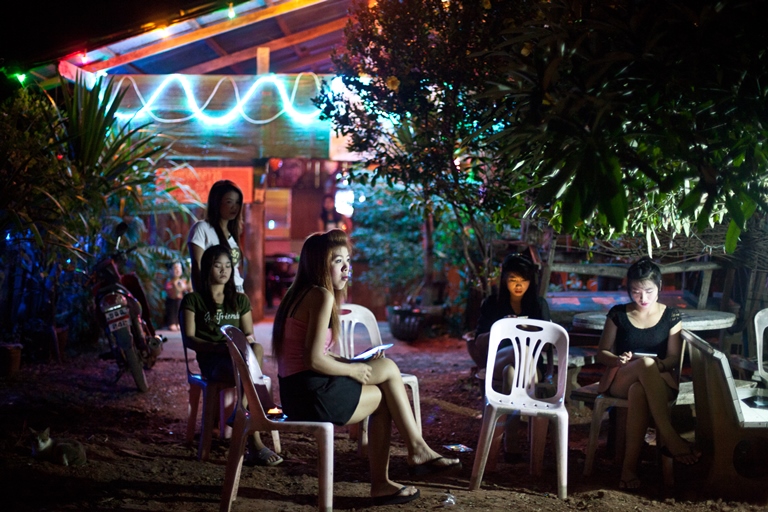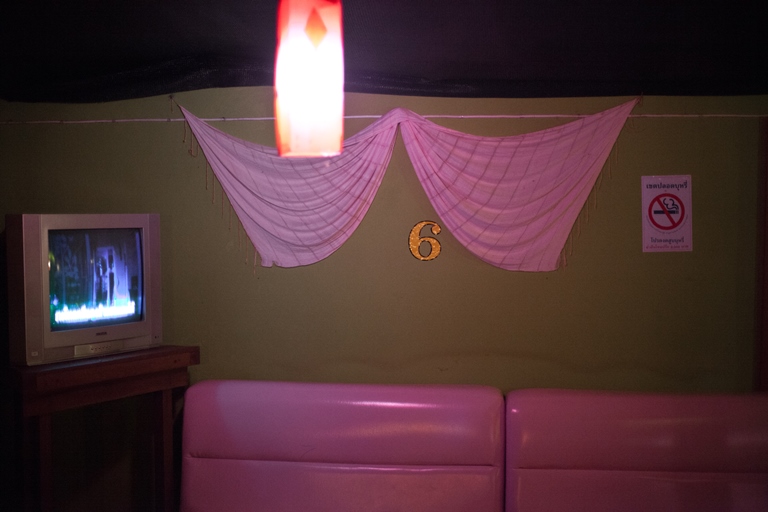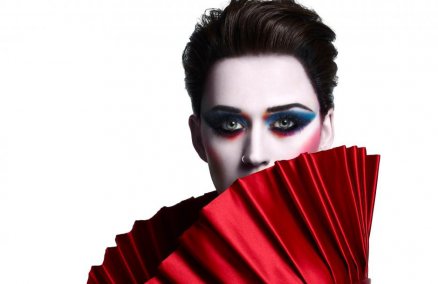Cattleya Jaruthavee
Where do you find the inspiration for your work?
Everything is inspired from daily findings and social issues. Most of my work captures reality—which is a debatable topic itself—or at least what I see through my eyes, which is as closest to the living truth that the subject will allow me to see. Paused Dreams came out of a larger project I did on migrant women. I chose to highlight this segment because of its relevance to all societies, whether you’re a migrant or not. I collaborated with a local NGO in the area, and the subjects in Paused Dreams are all career sex workers.
Did your subjects have much to say about their conditions?
They don’t hate their work, as it is a matter of choice. Even though there is a yearning to do something else, and this is just a money-saving pit stop, most of them have been there for quite some time and don’t seem to be quitting any time soon. Being migrant workers, these girls don’t go home at the end of their working night, but lodge on-site in the sleeping quarters at each of their karaoke bars. Some of the occupational pitfalls are clients coercing them to partake in something they’re not comfortable with. They also tend to self-medicate: morning-after pills, birth-control pills, beauty enhancement shots.
You did an earlier set of photographs on “Pretties.” Is there a similarity?
Even though the core definition of these two occupations are very different, sadly over time, there has become some overlap. Many of the workers that I came across are in it by choice. Some do it because they started and just kept going. Others, like the Laotian sex workers, said they did it to save money before moving onto something else. These were very similar answers I got from the subjects in my Pretties series as well. The one obvious similarity they have is they are both male appeasement occupations, which brings up the topic of using femininity as your occupational drive, and whether this is a healthy tool.

Is there a message you’re trying to send to the audience?
Paused Dreams is not an attempt to sensationalize pity, but to show the lounge hostesses as they are, like any other job that involves waiting for clients. Like most artists, there is always the intention to evoke a ‘desired’ thought pattern within the audience. My intention is to show topics that people sometimes feel uncomfortable with, or don’t want to know anything about. In the case of the sex worker industry, you have charities going in and trying to empower them to change jobs. A lot of the time, they are in it by choice, and this is what people have to understand and respect. This is why it turns into a victimizing occupation—charities and individuals who want to feel better about themselves make it that way. There are some very positive charities out there who act as support groups, creating contraception awareness and counsellors, but never trying to make them change.

Kathmandu Photo Gallery, 87 Pan Rd., 02-234-6700. Open Tue-Sun 11am-7pm




















